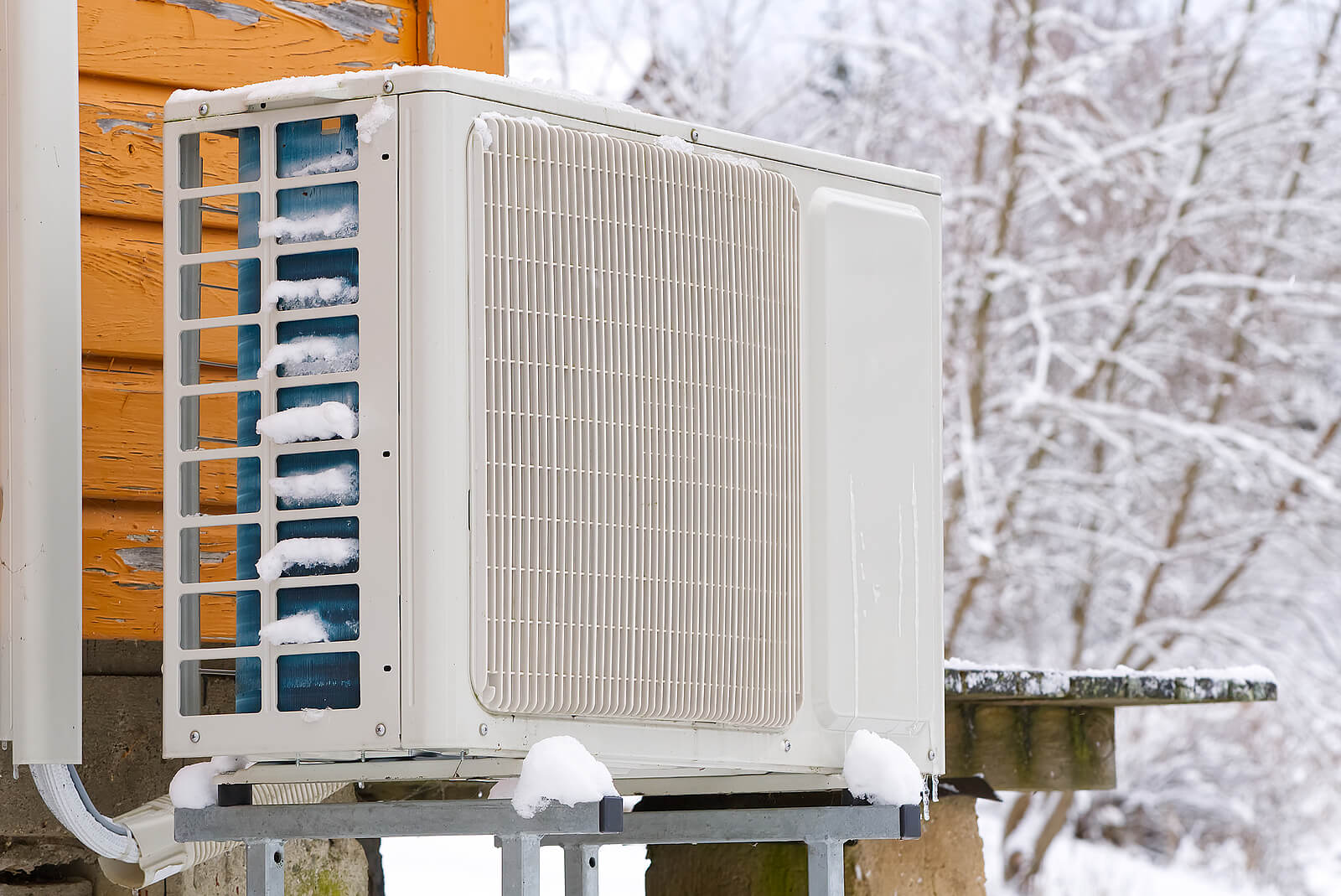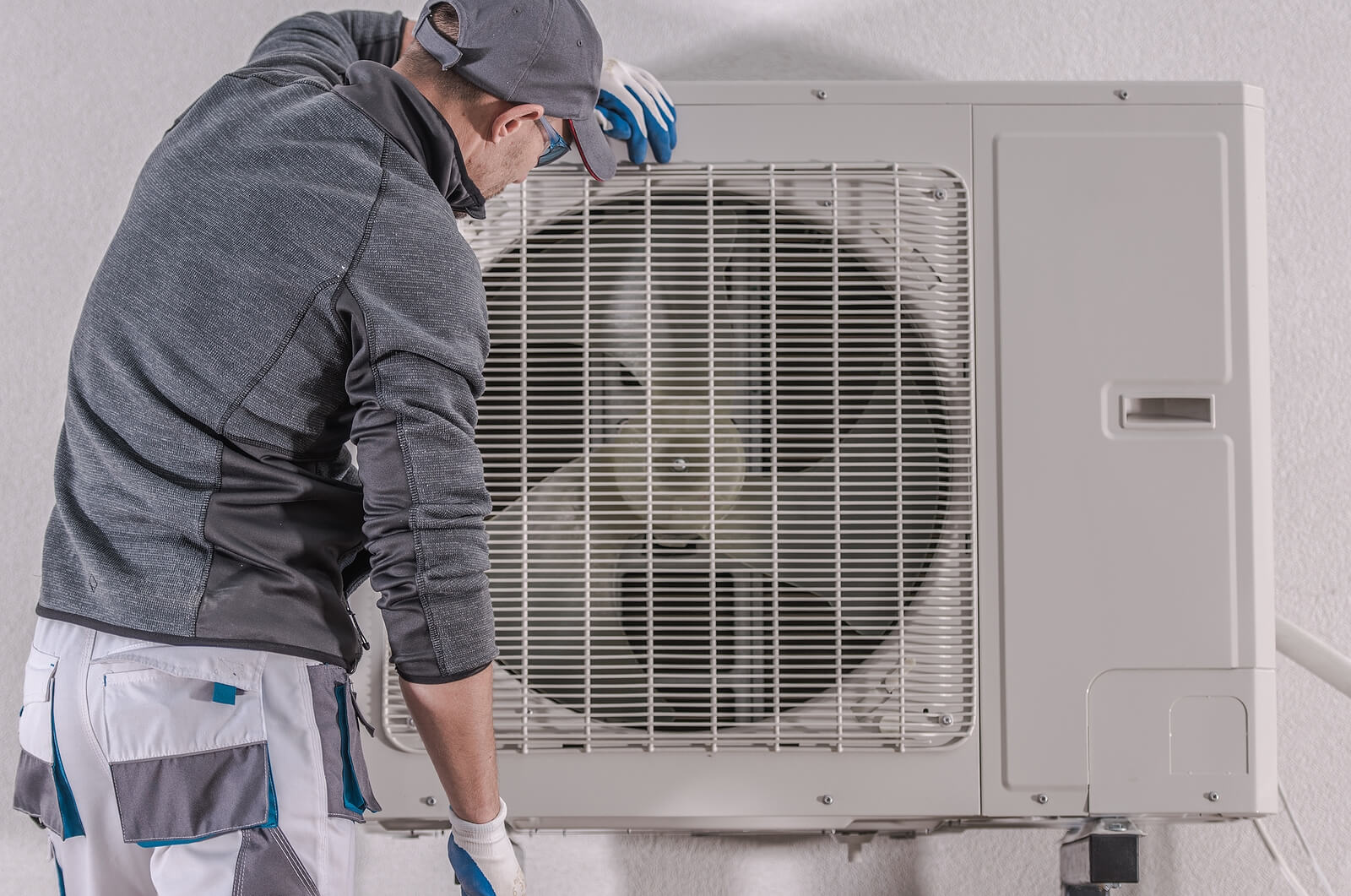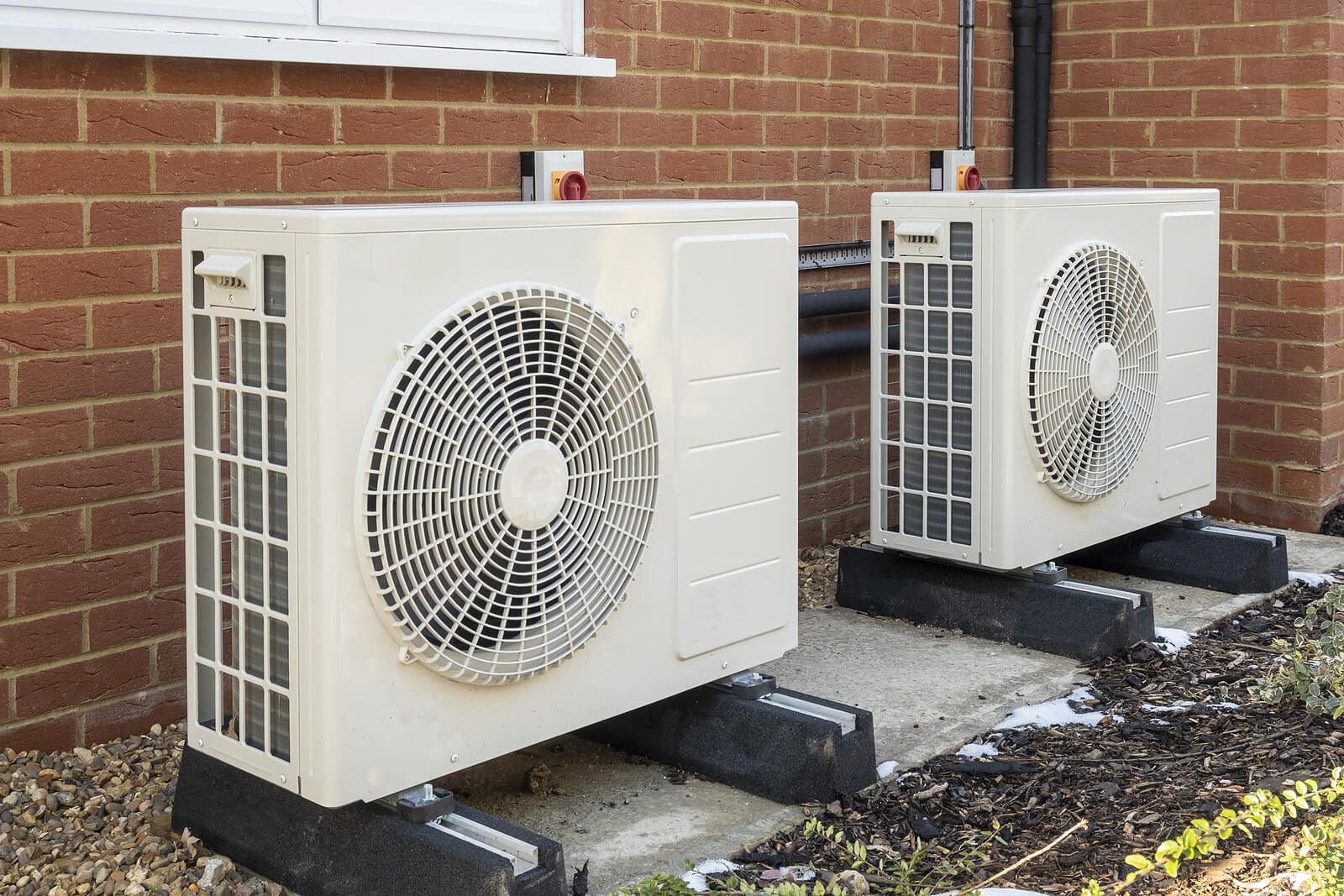The UK continues to lag behind other European countries with replacing polluting gas boilers with the installation of low carbon heat pumps. Their uptake is still being held back by large degrees of skepticism, with just 1.3 heat pumps sold for every 1,000 households in 2020.
Used to heat homes in the bitter winter weather, and cool them in the blissful heat of summer, heat pumps have proven to be popular in other European countries as a clever investment for homeowners.
The Prime Minster has confirmed that all new gas boiler installations will be banned across the UK by 2035, so why not begin your research now and find out what you can expect from this new wave of green heating technology?
What is a heat pump?
In modest terms, a heat pump follows the same process as a refrigerator, only in reverse. Heat is extracted from an external source (the air, ground, or water surrounding a building), before being compressed and transferred into the air circulating throughout your home.
Such is their versatility, heat pumps are fitted with a reversing valve so you can change the direction of refrigerant flow to either cool or heat your home.
The two most common types of heat pumps are ground source pumps and air source models, with the main difference pertaining to where they extract heat from. Air source heat pumps absorb heat from the atmosphere, whereas ground source pumps take heat from the surface.
How do heat pumps work?
One very important point to grasp is that heat pumps don’t produce heat. Akin to a water pump that lifts water from a low level to a higher level, their core function is to move heat from one place to another.
Heat pumps work by absorbing heat from the environment and converting it to a fluid, where it is then forced to a higher temperature through a compression cycle. The heat is then transferred from the compressed fluid into the central heating system, enabling you to make your home toasty and make hot water accessible.
How much does a heat pump cost?

Many different factors need to be considered when costing up your heat pump system. Installing a ground source heat pump will tug harder on your purse strings in comparison to an air source pump, but the ground is generally warmer than the air and could offer greater efficiency and savings per year.
Large homes and poorly-insulated properties will require a bigger heat pump, incurring greater running charges and installation costs. Space dimensions inside and around your property will also need to be assessed.
The external unit of an air source heat pump is similar in size to a washing machine, and can be positioned anywhere with a reasonable flow of fresh air and sufficient breathing room. Keep on your neighbour’s good side by ensuring it is at least one metre from their property, so there is no noise irritation. New heat pumps are much quieter than older prototypes, so you may benefit from investing in a modern model.
Even prior to installation, the starting cost of an air source pump is around £6000, while a ground source pump will set you back at least five figures. Remember that a ground source heat pump relies on a much vaster external space, but choosing the right system ultimately depends on the needs of your household.
How much does a heat pump cost to run?
It is difficult to pinpoint an exact figure for the running cost of a heat pump, as it is dependent on three main conditions – your heat demand, coefficient of performance (COP), and the temperature of the heat source. The cost will vary from one property to the next.
Heat pumps use a small amount of electricity to operate. The higher the COP, the more economical your heat pump. This is because you’re using less electricity to produce heat for your home.
You should also consider other ways and means that could help prevent heat loss and boost the efficiency of your heat pump. This could include installing double or triple glazing on windows, fitting loft insulation, or investing in an underfloor heating system.
As a rule of thumb, the average UK home requires 12,000 kWh of heat each year. For every 1 kWh of electricity, an air source heat pump can generate 3kWh of heat. This means the heat pump will use 4,000 kWh of electricity to produce the required amount of heat. If we take the most up-to-date median that electricity costs around 17.4p per kWh, your annual heating bill would be around £696.
Why is the government pushing for heat pumps?
These electrically powered devices are a pivotal part of Boris Johnson’s government objective to be carbon net-zero by 2050.
Heating buildings is accountable for around a fifth of the UK’s carbon footprint, which is why homeowners in England and Wales will be eligible for a £5000 grant from April 2022 in the hope of persuading them to change the way their heat is distributed.
Are heat pumps beneficial for homeowners?
As heat pumps emit around three times the energy they use, they offer an extremely high level of efficiency. This could save households upwards of £1,000 per year on bills.
Heat pumps can be a tremendous acquisition for your property in many ways, particularly when judged against combustion heating systems. Other key advantages include their long lifespan (an average of 14-15 years), low maintenance, and the convenience of being able to switch them to cooling mode during periods of sunshine.
What are the challenges of heat pumps?

Even though the initial cost of a heat pump can seem pretty hefty, the government subsidy will help offset the upfront cost until this renewable energy technology becomes cheaper.
The installation process itself can also prove to be complex. As a rule, air heat pumps are easier to install, while ground source heat pumps require significant excavation work.
There are also concerns that heat pumps would be impractical for between 37% and 54% of UK homes currently using gas. In a report backed by the four gas distribution networks (GDN), the shortage of exterior space and thermal properties of building fabric mean a heat pump is not capable of fulfilling the space prerequisite of the property, or can only be achieved through disruptive measures such as solid wall insulation.
What are the alternatives to heat pumps?
A number of green energy plans are currently being experimented with. One of the fastest growing low-carbon models is district heating. This works well in cities and other urban areas where commercial properties and blocks of flats can be hooked up to the same communal heat network.
District heating technology works by producing power via a centralised system, whether that be biomass, combined heat and power (CHP), or in smaller systems, gas, or oil boilers.
Many of the powerhouses that produce and ship fossil fuel gas are keen for the UK to adopt hydrogen as a replacement. The government is pioneering trials of hydrogen heating, with a series of pilots projected before the end of the decade.
Coastal environments, such as Cornwall with its granite backbone, have even started benefitting from geothermal energy captured from hot underground works. Penzance is already home to a geothermally heated swimming pool, but such opportunities nationwide are limited.
Are heat pumps actually better for the environment?
Natural gas is both bad and unhealthy for the environment. Currently, gas heating accounts for 21% of the UK’s carbon emissions, so strongly consider heating your home with electricity to lower your energy use and subsequent impact on the planet.
Compared to natural gas, propane, and fuel oil systems, this method of heating your building also repels the risk of gas or carbon monoxide leaks.
In general, heat pumps benefit the landscape and produce less CO2 than traditional fossil fuel boilers. However, as they require a small amount of electricity, they cannot claim to be fully carbon-free.
Final Thoughts
Heat pumps function at maximum performance when they are installed in homes and business premises with properly installed windows, doors, and walls. The more heat or warmth you can retain, the lower the running cost of your heat pump, as it won’t require superior intensity to work.
The high levels of insulation needed aren’t always possible in older, solid-walled homes that are a familiar sight across the UK, but with the correct design and installation, you can maintain a steady, pleasant temperature within your indoor space.
As we look to power different facets of our lives through renewable ‘green’ energy sources, heat pumps are just one of those contraptions ready to play a towering role.
